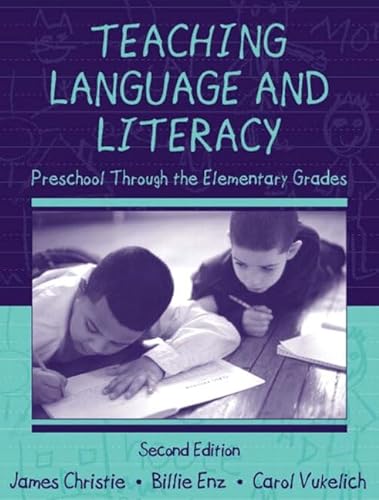This distinctive book integrates constructivist learning, diversity, and instruction-based assessment, and helps translate principles into practice. The central, underlying thesis of Teaching Language and Literacy is that children are at the center of all good language and literacy teaching. The book, with broad coverage of preschool through the elementary grades, advocates an appreciation of student diversity and an implementation of assessment strategies relating to specific learning/teaching events. It describes how children construct their own knowledge about oral and written language by engaging in integrated, meaningful, and functional activities with other people in a variety of contexts. Elementary school teachers and administrators
“This text does an exemplary job of presenting current early literacy research and methods in a manner that can be understood and respected. Also, its emphasis upon workshop-based instruction is very appealing to me as a long-time advocate for this approach to literacy.”
–Scott A. L. Beck, Georgia Southern University
The third edition of Teaching Language and Literacy: Preschool Through the Elementary Grades integrates a constructivist/emergent literacy perspective with science-based instructional practices. This unique focus on theories and techniques that have proven to be successful helps pre-service and in-service teachers translate principles into classroom practice.
Perfect for any course with a focus on language, the book covers the development and teaching of both oral and written language in preschool through elementary grades. Its emphasis on diversity includes special features that describe how teachers can adjust instruction to meet the needs of second-language and bilingual learners. In addition, the third edition focuses on scientifically-based reading research (SBRR) throughout, blending these findings with other perspectives in a “value added” approach to language and literacy teaching and learning.
New features include:
- Emphasis on a blended approach to language and literacy instruction, including both authentic learning linked to activities and developmentally-appropriate teaching.
- Activities such as “Linking Knowledge to Practice” help students connect theory to practices they observe in preschool and kindergarten classrooms.
- In-depth coverage of new federal and state literacy initiatives, standardized literacy assessments, and latest practices in ongoing literacy assessment.
